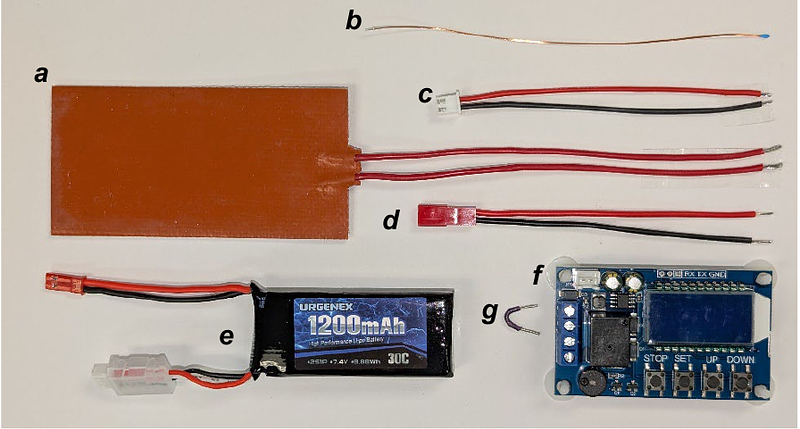A simple, inexpensive battery-powered homeothermic warming pad for mice and rats

A simple, inexpensive battery-powered homeothermic warming pad for mice and rats
Fleites, I. R.; Morales, K.; Roper, S. D.
AbstractBackground Anesthesia decreases core body temperature, and this seriously compromises the physiological status of an experimental animal. Hypothermia alters many aspects of neural function. When recording nervous system activity in anesthetized animals, their core temperature must be stabilized. New method This report describes an inexpensive, battery-powered, temperature-controlled warming pad for mice and rats and documents its validity and utility. The device is portable, making it convenient for researchers who conduct procedures such as surgical preparations in one location and transport the anesthetized animal to another location for experimental recordings. Results The device keeps anesthetized mice normothermic +/- 0.7 C. for over 6 hours without supplemental warmth (e.g., heat lamp), despite >15 C. differential between ambient room temperature and core body temperature. We demonstrate how the warming pad can be used for in vivo imaging of neuronal activity for a prolonged period in mice. Comparison with existing methods Commercial heating pads for small animals are expensive, somewhat bulky, and require power cords and a 120/240V source. Transporting an anesthetized animal from one location (e.g. surgical suite) to another (e.g., imaging rig) involves moving power cords. Moreover, commercial devices are not always compatible with custom stereotaxic frames, microscope stages, or holding boxes. The device described here is small, inexpensive, battery-powered, and readily adaptable to experimental set ups. Conclusion The homeothermic heating pad provides a simple method for maintaining the core temperature of anesthetized small animals. It can be constructed in under 30 minutes, the components are readily available, and the cost is less than $100. It is exceptionally useful for experiments on mice or rats.